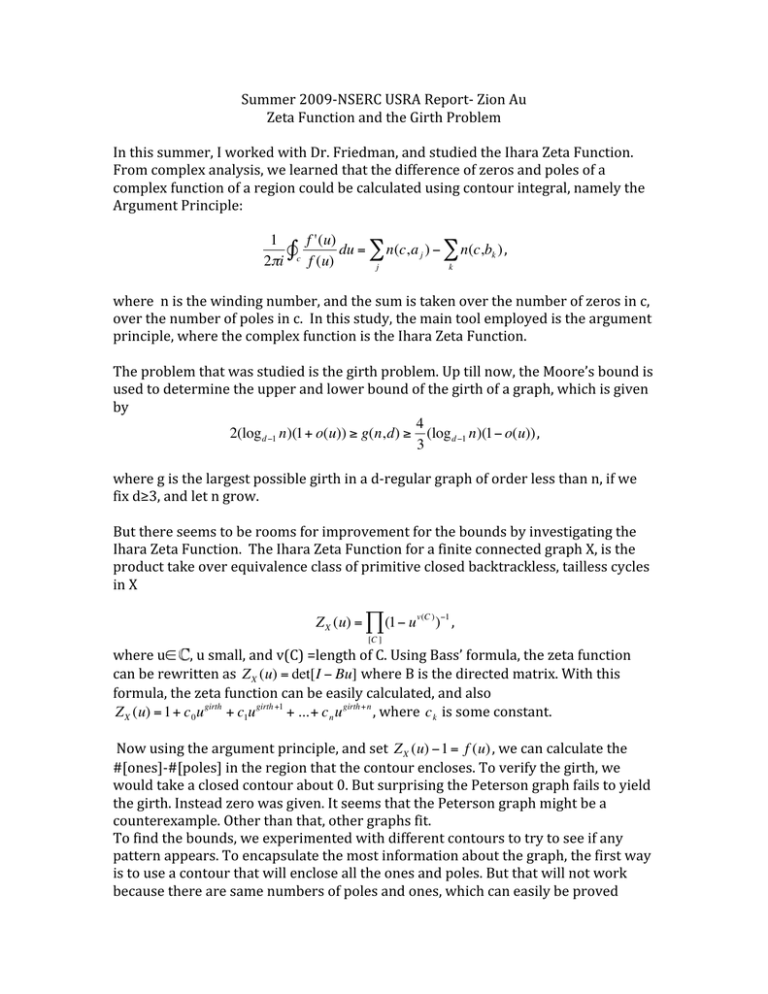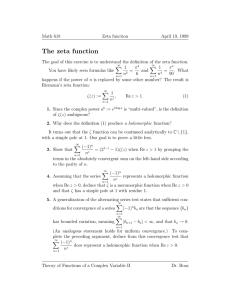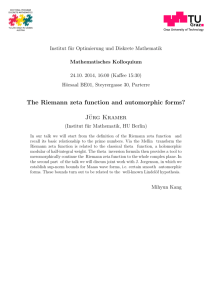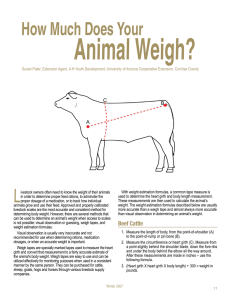Summer 2009‐NSERC USRA Report‐ Zion Au Zeta Function and the Girth Problem In this summer, I worked with Dr. Friedman, and studied the Ihara Zeta Function.
advertisement

Summer 2009‐NSERC USRA Report‐ Zion Au Zeta Function and the Girth Problem In this summer, I worked with Dr. Friedman, and studied the Ihara Zeta Function. From complex analysis, we learned that the difference of zeros and poles of a complex function of a region could be calculated using contour integral, namely the Argument Principle: 1 f '(u) du = ∑ n(c,a j ) − ∑ n(c,bk ) , ∫ 2πi c f (u) j k where n is the winding number, and the sum is taken over the number of zeros in c, over the number of poles in c. In this study, the main tool employed is the argument € principle, where the complex function is the Ihara Zeta Function. The problem that was studied is the girth problem. Up till now, the Moore’s bound is used to determine the upper and lower bound of the girth of a graph, which is given by 4 2(log d −1 n)(1+ o(u)) ≥ g(n,d) ≥ (log d −1 n)(1− o(u)) , 3 where g is the largest possible girth in a d‐regular graph of order less than n, if we fix d≥3, and let n grow. € But there seems to be rooms for improvement for the bounds by investigating the Ihara Zeta Function. The Ihara Zeta Function for a finite connected graph X, is the product take over equivalence class of primitive closed backtrackless, tailless cycles in X Z X (u) = ∏ (1− u v(C ) )−1 , [C ] € where u∈ , u small, and v(C) =length of C. Using Bass’ formula, the zeta function can be rewritten as Z X (u) = det[I − Bu] where B is the directed matrix. With this formula, the zeta function can be easily calculated, and also € Z X (u) = 1+ c 0 u girth + c1u girth +1 + ...+ c n u girth +n , where c k is some constant. € Now using the argument principle, and set Z X (u) −1 = f (u) , we can calculate the #[ones]‐#[poles] in the region that the contour encloses. To verify the girth, we € would take a closed contour about 0. But surprising the Peterson graph fails to yield the girth. Instead zero was given. It seems that the Peterson graph might be a € counterexample. Other than that, other graphs fit. To find the bounds, we experimented with different contours to try to see if any pattern appears. To encapsulate the most information about the graph, the first way is to use a contour that will enclose all the ones and poles. But that will not work because there are same numbers of poles and ones, which can easily be proved using the fundamental theorem of algebra. To find a bound, the numbers of vertices were fixed and the n (order of graph) was varied, and contours of different kinds were taken to see if any pattern could be spotted. As of now, I cannot spot reasonable pattern by experimenting different contours but there is hope that a pattern can be discovered. The main difficulty is choosing proper contour integrals for different zeta functions to observe some useful patterns, and obtain a better bound. For more information on Ihara Zeta Function and graph theory, please visit: http://math.ucsd.edu/~aterras/









